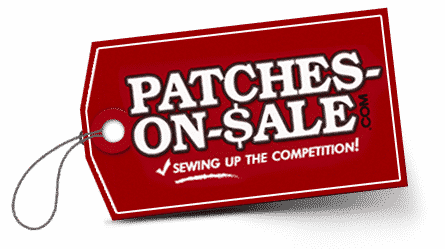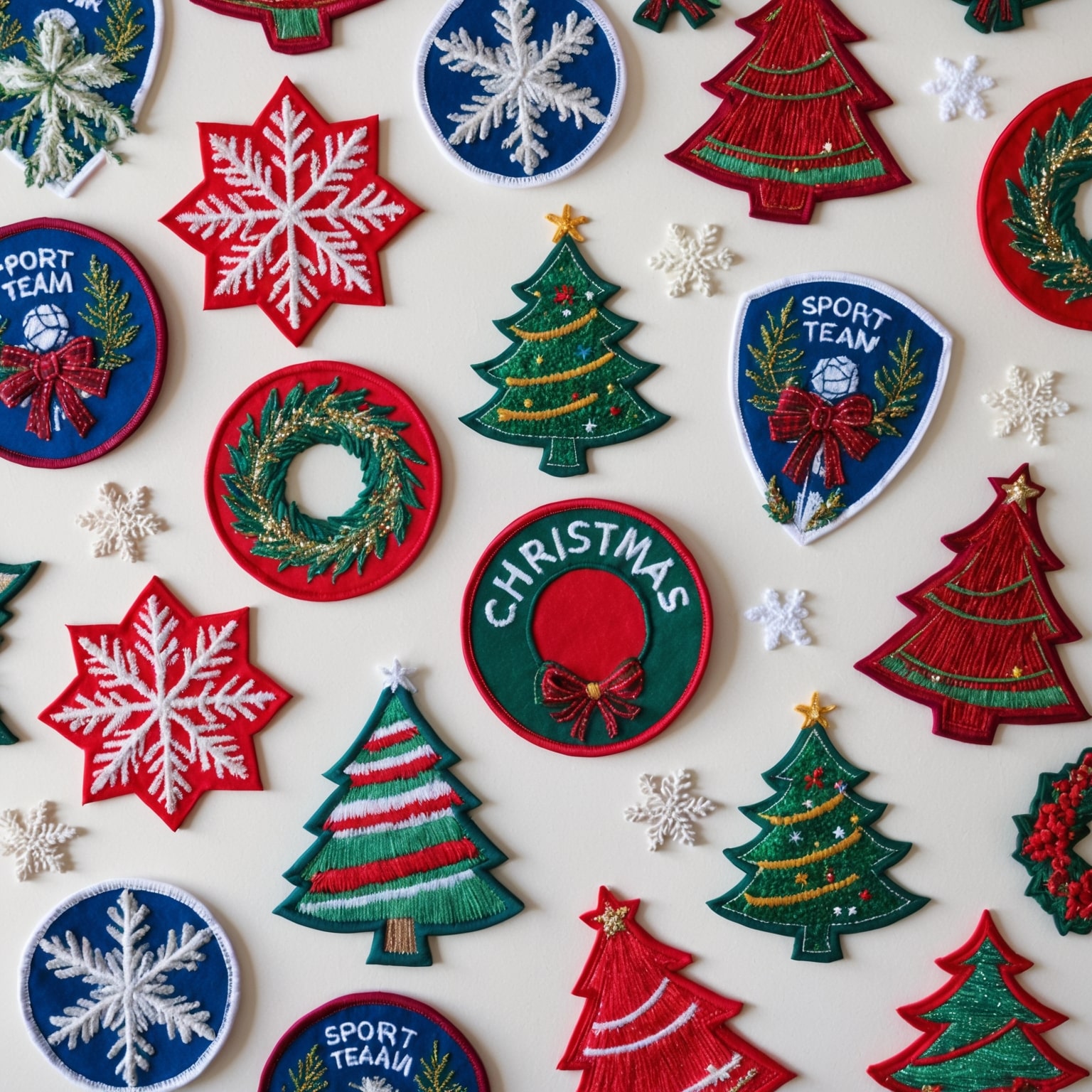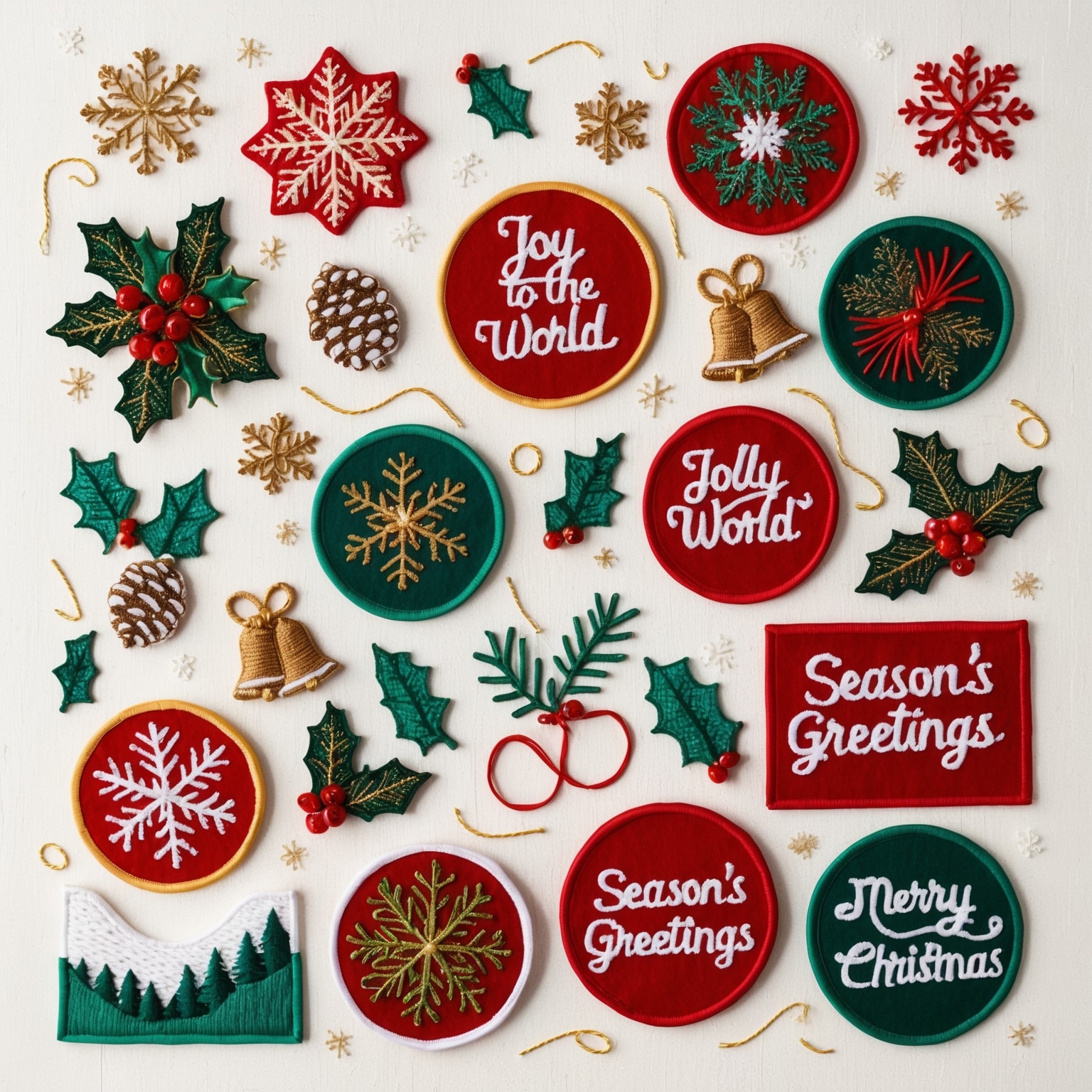Sports patches have long been a symbol of achievement, pride, and team identity. Whether sewn onto a jersey, jacket, or hat, these patches tell the story of a team’s journey, commemorating victories, championships, and milestones. The materials used to create these patches play a critical role in their durability, appearance, and overall impact. Selecting the right materials ensures that sports patches not only look great but also stand the test of time, enduring the rigors of athletic competition and the elements.
In this comprehensive guide, we’ll explore the various materials used in creating sports patches, discussing their benefits, limitations, and best applications. By the end, you’ll have a thorough understanding of how to choose the best materials for your sports patches, ensuring they remain vibrant and intact for years to come.
The Importance of Quality in Sports Patches
Why Quality Matters
Sports patches are more than just decorative elements; they represent the identity, achievements, and pride of a team. High-quality patches contribute to a team’s professional appearance, boost morale, and serve as lasting mementos of success. Poorly made patches, on the other hand, can quickly deteriorate, losing their color, shape, and impact.
- Durability: Athletes and teams often wear their patches during intense physical activities and in various weather conditions. High-quality materials ensure that patches can withstand sweat, rain, sun exposure, and frequent washing without fading or fraying.
- Aesthetic Appeal: The right materials contribute to the patch’s overall look and feel, ensuring that it complements the uniform and represents the team’s identity accurately. A vibrant, well-crafted patch can boost team spirit and confidence.
- Longevity: Sports patches are keepsakes that players and fans treasure for years. Quality materials ensure that these patches remain in good condition, preserving memories and pride long after the season ends.
Given the significance of sports patches, it’s essential to choose materials that meet the demands of both aesthetics and durability.
Key Materials Used in Sports Patches
When it comes to sports patches, several materials are commonly used, each offering unique benefits and characteristics. Let’s explore the most popular materials and their applications in sports patches.
1. Twill Fabric
Twill is one of the most popular and widely used fabrics for sports patches. It’s known for its durability, versatility, and ability to hold intricate designs and colors.
Benefits of Twill Fabric:
- Durability: Twill fabric is highly durable, making it ideal for sports patches that will be exposed to rough conditions. The diagonal weave of the fabric gives it strength and resistance to tearing and fraying.
- Versatility: Twill is available in various weights and finishes, allowing for flexibility in design and application. It can be used for both large and small patches and can hold detailed embroidery well.
- Color Retention: Twill fabric holds dye well, ensuring that the colors of the patch remain vibrant even after repeated washing and exposure to sunlight.
- Ease of Application: Twill patches can be easily sewn onto uniforms, jackets, or bags, making them a practical choice for teams and organizations.
Best Uses for Twill Fabric:
Twill fabric is ideal for patches that require a durable base with detailed embroidery. It’s commonly used for team logos, name patches, and championship badges. Whether for professional sports teams or youth leagues, twill fabric provides a reliable and visually appealing option.
2. Embroidery Thread
Embroidery thread is the material used to create the designs, lettering, and details on sports patches. The quality of the thread significantly impacts the patch’s appearance, texture, and durability.
Types of Embroidery Thread:
- Polyester Thread: Polyester is the most commonly used embroidery thread for sports patches. It is known for its strength, elasticity, and colorfastness. Polyester thread is resistant to fading and fraying, making it ideal for patches exposed to harsh conditions and frequent washing.
- Rayon Thread: Rayon thread offers a high sheen and smooth texture, giving patches a more polished and luxurious appearance. However, it is less durable than polyester and may not be as resistant to environmental factors.
- Cotton Thread: Cotton thread provides a natural, matte finish and is less likely to cause allergic reactions. However, it is not as durable as polyester or rayon and may fade or fray over time.
Benefits of High-Quality Embroidery Thread:
- Vibrant Colors: High-quality embroidery thread retains its color over time, ensuring that the patch remains bright and attractive even after repeated use.
- Strength and Durability: Strong, durable thread resists breaking and fraying, preserving the integrity of the patch design.
- Smooth Finish: High-quality thread provides a smooth, consistent finish, enhancing the overall appearance of the patch.
Best Uses for Embroidery Thread:
Embroidery thread is used in all types of sports patches, from simple name tags to complex team logos. Polyester thread is particularly well-suited for patches that need to withstand heavy wear and frequent washing, making it the preferred choice for most sports applications.
3. Felt
Felt is a classic material that has been used for decades in the creation of sports patches. It offers a vintage look and a soft, tactile feel that sets it apart from other fabrics.
Benefits of Felt:
- Soft Texture: Felt has a soft, wool-like texture that adds a unique touch to sports patches. It provides a contrast to the smoother textures of twill or polyester.
- Vintage Appeal: Felt is often associated with traditional, vintage sports patches, making it a popular choice for retro or nostalgic designs.
- Ease of Embroidery: Felt holds embroidery well, allowing for detailed designs and a crisp finish. It also pairs well with other materials, such as twill or chenille, to create multi-layered patches.
Limitations of Felt:
- Durability: While felt offers a distinctive look, it is less durable than twill or polyester. It is more prone to pilling, fraying, and fading, especially when exposed to moisture and friction.
- Maintenance: Felt patches require more careful maintenance and may not withstand the rigors of sports as well as other materials.
Best Uses for Felt:
Felt is ideal for patches that aim to capture a vintage or classic aesthetic. It is often used in letterman jackets, retro team logos, and commemorative patches. While it may not be the best choice for high-contact sports, it excels in applications where appearance and tradition are the primary considerations.
4. Chenille
Chenille is a textured, fluffy material commonly used in varsity letters and patches. It provides a three-dimensional look and a soft, plush feel that stands out.
Benefits of Chenille:
- Three-Dimensional Texture: Chenille’s fluffy, raised texture creates a visually striking and tactile patch that stands out on uniforms and jackets.
- Bold and Eye-Catching: The bold appearance of chenille patches makes them ideal for letters, numbers, and other designs that need to be prominent and easily recognizable.
- Durable: Despite its soft texture, chenille is durable and can withstand regular wear and washing, making it suitable for sports applications.
Limitations of Chenille:
- Limited Detail: Due to its thick, fluffy texture, chenille is not suitable for highly detailed designs. It works best for simple shapes, letters, and numbers.
- Weight: Chenille patches are heavier than other types of patches, which may not be ideal for lightweight uniforms or apparel.
Best Uses for Chenille:
Chenille is the go-to material for varsity letters, school spirit patches, and championship insignia. It is particularly popular in high school and college sports, where it is used to create bold, impactful designs that celebrate team achievements.
5. Leather
Leather patches offer a premium, rugged look that is both stylish and durable. While not as common as other materials, leather is gaining popularity in sports patches for its unique appeal.
Benefits of Leather:
- Luxurious Appearance: Leather patches provide a high-end, sophisticated look that stands out from traditional fabric patches. They add a touch of elegance and durability to sports apparel.
- Durability: Leather is incredibly durable, resistant to wear and tear, and can withstand exposure to the elements. It ages well, developing a unique patina over time.
- Versatility: Leather patches can be embossed, debossed, or laser-etched with intricate designs, offering a wide range of customization options.
Limitations of Leather:
- Cost: Leather is more expensive than other patch materials, which may be a consideration for teams on a budget.
- Application: Leather patches require special application methods, such as stitching or heat-sealing, to ensure they adhere securely to the fabric.
Best Uses for Leather:
Leather is an excellent choice for premium sports patches, especially for commemorative or special edition designs. It is often used in high-end sportswear, team jackets, and accessories where a luxurious and durable patch is desired.
6. PVC (Polyvinyl Chloride)
PVC is a flexible, durable plastic material that has become increasingly popular for sports patches. PVC patches are known for their vibrant colors, waterproof properties, and ability to hold intricate designs.
Benefits of PVC:
- Durability: PVC is highly durable and resistant to fading, fraying, and cracking. It is also waterproof, making it ideal for outdoor sports and activities.
- 3D Design: PVC patches can be molded into three-dimensional designs with fine details and vibrant colors. This allows for creative and eye-catching designs that stand out.
- Easy Maintenance: PVC patches are easy to clean and maintain, making them a practical choice for sports apparel that may be exposed to dirt, mud, or water.
Limitations of PVC:
- Stiffness: PVC patches are less flexible than fabric patches, which may affect the comfort and fit of the apparel they are attached to.
- Weight: PVC patches are heavier than traditional fabric patches, which may not be ideal for lightweight or breathable sports uniforms.
Best Uses for PVC:
PVC is well-suited for outdoor sports patches, especially in environments where the apparel may be exposed to water, dirt, or rough conditions. It is also popular for creating bold, colorful patches with intricate designs, such as team mascots or logos.
Choosing the Right Material for Your Sports Patches
With a variety of materials available, choosing the right one for your sports patches requires careful consideration of several factors. Here’s a step-by-step guide to help you make the best choice.
1. Consider the Purpose of the Patch
Start by defining the purpose of the sports patch. Is it meant to be a permanent fixture on a team uniform, a commemorative item, or a promotional piece? The intended use of the patch will influence the choice of material.
- Team Uniforms: For patches that will be worn on team uniforms, durability and ease of maintenance are key. Materials like twill and polyester embroidery thread are ideal for their strength and resistance to wear and tear.
- Commemorative Patches: If the patch is meant to celebrate a specific event or achievement, consider materials like felt or chenille that offer a unique, traditional look.
- Promotional Patches: For promotional or special edition patches, PVC or leather can provide a modern, eye-catching design that stands out from traditional fabric patches.
2. Evaluate Durability Requirements
Consider the conditions the patch will be exposed to and the level of durability required. Will the patch be subjected to frequent washing, exposure to the elements, or rough handling?
- High-Durability Needs: For patches that need to withstand heavy use, such as those on active sports uniforms, opt for materials like twill, polyester thread, or PVC that offer high durability and resistance to fading, fraying, and damage.
- Moderate Durability: For patches that will be worn occasionally or in less demanding conditions, materials like felt or rayon thread may be suitable, offering a balance of durability and aesthetics.
- Low-Durability Needs: If the patch is intended as a collectible or decorative item, materials like chenille or leather can be used for their unique appearance and tactile qualities, even if they may require more careful handling.
3. Match the Material to the Design
The complexity of the patch design will also influence the choice of material. Consider the level of detail, color requirements, and overall aesthetic when selecting materials.
- Detailed Designs: For intricate designs with fine details, materials like twill and polyester embroidery thread are ideal, as they can hold detailed patterns and vibrant colors.
- Bold, Simple Designs: If the design is simple but bold, such as a varsity letter or a mascot, materials like chenille or PVC can be used to create a striking, three-dimensional effect.
- Elegant or Premium Designs: For patches that require a premium look, leather offers a luxurious feel and the ability to emboss or deboss intricate designs.
4. Factor in Cost and Budget
Budget is always a consideration when choosing materials for sports patches. Different materials come with varying costs, so it’s important to balance quality with affordability.
- Budget-Friendly Options: Twill and polyester thread are cost-effective materials that offer high durability and versatility, making them ideal for teams or organizations with limited budgets.
- Mid-Range Options: Felt and rayon thread offer a unique aesthetic at a moderate price point, making them suitable for teams that want to create a distinctive look without overspending.
- Premium Options: Leather and PVC are more expensive materials, but they provide a high-end look and durability, making them ideal for special edition or commemorative patches.
5. Consider Application and Attachment
How the patch will be attached to the apparel or item is another important factor. Different materials may require different attachment methods, such as sewing, heat-sealing, or adhesive backing.
- Sew-On Patches: Materials like twill, felt, and chenille are typically sewn onto uniforms, jackets, or bags. Ensure that the fabric of the apparel can accommodate the weight and texture of the patch.
- Heat-Seal Patches: Some patches, particularly those made of PVC or leather, may require heat-sealing to adhere securely to the fabric. Check that the apparel can withstand the heat-sealing process without damage.
- Adhesive Patches: For temporary or promotional patches, adhesive backing can be used. However, this method may not be as durable as sewing or heat-sealing, so it’s important to consider the intended use and longevity of the patch.
6. Assess the Aesthetic Impact
Finally, consider the overall aesthetic impact of the patch. The material should complement the design and enhance the visual appeal of the patch.
- Texture and Feel: Different materials offer different textures, from the soft, vintage feel of felt to the sleek, modern look of PVC. Choose a material that aligns with the desired aesthetic and brand identity of the team or organization.
- Color and Finish: Ensure that the material can achieve the desired colors and finish, whether it’s the bright, vibrant hues of polyester thread or the natural, matte look of leather.
- Contrast and Detail: Consider how the material will affect the contrast and detail of the design. Materials like chenille may create a bold, textured look, while twill allows for precise, detailed embroidery.
Crafting Sports Patches That Stand the Test of Time
Choosing the right materials for sports patches is crucial to creating a product that not only looks great but also endures the demands of athletic competition and frequent use. By carefully considering factors such as durability, design complexity, cost, and application, you can select materials that ensure your sports patches remain vibrant, intact, and cherished for years to come.
Whether you’re designing patches for a professional sports team, a school club, or a community league, the right materials will make all the difference. From the versatility of twill and the bold texture of chenille to the luxurious feel of leather and the durability of PVC, each material offers unique benefits that can elevate your sports patches to the next level.
As you embark on the journey of creating sports patches, remember that these small but mighty symbols carry the pride, spirit, and achievements of the teams and individuals they represent. With the right materials, your patches will stand the test of time, honoring the champions who wear them.
If you are interested in purchasing high-quality custom patches, feel free to call us at 1-877-503-8485 or fill out one of our FREE quotes here.




